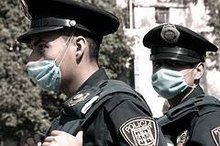8 Components of Primary Health Care
In 1978, the World Health Organization (WHO) adopted the Declaration of Alma-Ata 12. The declaration, named for the host city, Almaty, Kazakhstan (formerly known as Alma-Ata), outlined the organization's stance towards health care made available for all people in the world 12. The declaration also defined eight essential components of primary health care, which helped outline a means of providing health care globally 23.
Public Education
Public education is the first, and one of the most essential, component of primary health care 23. By educating the public on the prevention and control of health problems, and encouraging participation, the World Health Organization works to keep disease from spreading on a personal level 12.
Proper Nutrition
What Are the Causes of Communicable Diseases?
Learn More
Nutrition is another essential component of health care. WHO works to prevent malnutrition and starvation and to prevent many diseases and afflictions.
Clean Water & Sanitation
A supply of clean, safe drinking water, and basic sanitation measures regarding trash, sewage and water cleanliness can significantly improve the health of a population, reducing and even eliminating many preventable diseases.
Maternal & Child Health Care
List of Pandemic Diseases
Learn More
Ensuring comprehensive and adequate health care to children and to mothers, both expecting and otherwise, is another essential element of primary health care 23. By caring for those who are at the greatest risk of health problems, WHO helps future generations have a chance to thrive and contribute to globally. Sometimes, care for these individuals involves adequate counseling on family planning and safe sex.
Immunization
By administering global immunizations, WHO works to wipe out major infectious diseases, greatly improving overall health globally.
Local Disease Control
Prevention and control of local diseases is critical to promoting primary health care in a population 23. Many diseases vary based on location. Taking these diseases into account and initiating measures to prevent them are key factors in efforts to reducie infection rates.
Accessible Treatment
Another important component of primary health care is access to appropriate medical care for the treatment of diseases and injuries 23. By treating disease and injury right away, caregivers can help avoid complications and the expense of later, more extensive, medical treatment.
Drug Provision
By providing essential drugs to those who need them, such as antibiotics to those with infections, caregivers can help prevent disease from escalating. This makes the community safer, as there is less chance for diseases to be passed along.









